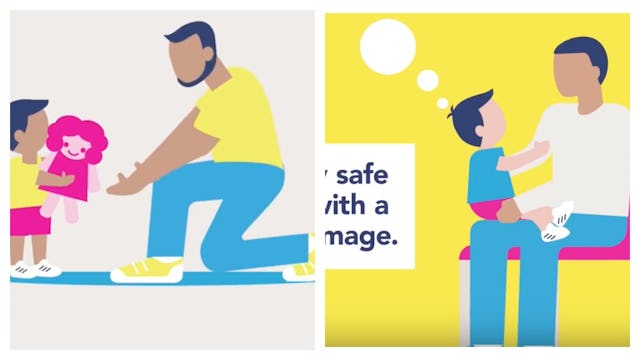Planned Parenthood Releases Video Series To Help Parents Talk About Bodies, Gender, And Transgender Identities

Planned Parenthood is valuable for so many reasons. Millions of men and women and teens worldwide benefit from their crucial and affordable reproductive health care, sex education, and advocacy for women’s health and rights to contraception to avoid unintended pregnancies. According to the website, one out of five American women has used Planned Parenthood at least once in her lifetime.
Cancer screenings, sexually transmitted infection prevention and treatment, and options to end or support a pregnancy are vital components to what Planned Parenthood has to offer. But their educational outreach is also paving the way for sexual health and healthy relationships with ourselves, our partners, and our kids around sexuality and gender identity.
Planned Parenthood just released a new series of videos that give parents and caregivers tools for talking to their young children about sexual health, identity, and body safety.
Yes. Young children.
Preschoolers are not only old enough to have conversations about consent and gender, but they are old enough to be given body autonomy.
If guardians can empower kids to respect and trust their bodies, they will transfer that respect to people around them. They will know the signs of tricky people and unsafe touch. If we allow kids to own their gender identity and expression without shame, we can follow their lead to help them live their most authentic lives.
The time to address these topics is now.
How To Talk To Preschoolers About Autonomy & Body Safety
When talking to your preschoolers about their body, the goal is to use proper terms for body anatomy, keep answers simple, and tell them who is allowed to touch and see their genitals and when. It’s important show our kids bodies that look like theirs as well as bodies of different abilities, gender, and race.
How To Teach Your Kids About Gender
By being aware of gender stereotypes we can stop sending messages that limit our children’s ability to express themselves in their most authentic way. There is no right way to be a boy or girl. If we make choices based on our kids’ likes and personality instead of their gender, their possibilities are endless.
How To Know If Your Kid Is Transgender
A new statement from The American Academy of Pediatrics announced the benefit of supporting transgender, nonbinary, and gender nonconforming children. The sooner a child is accepted by parents, educators, and health providers the more likely they are to lead healthy and happy lives.
This video explains the difference between gender expression and gender identity. What your child wears or likes does not determine gender. A transgender child is consistent, insistent, and persistent that their gender identity does not match their biological sex.
These conversations can seem complicated, but they don’t have to be.
In a press release, interim vice president of education at Planned Parenthood Federation of America said this:
“Parents and caregivers are the primary sex educators of their own children, and when they’re comfortable talking with their children at every age about their bodies, relationships, and sex, they are better able to help keep them healthy and safe. These videos can help parents and caregivers begin and continue having ongoing conversations with their children at any age, sending the message to their children that these topics are important — and a normal part of life.”
Check out PlannedParenthood.org/Parents for more topics and developmentally appropriate discussions about our kids’ sexual health.
This article was originally published on